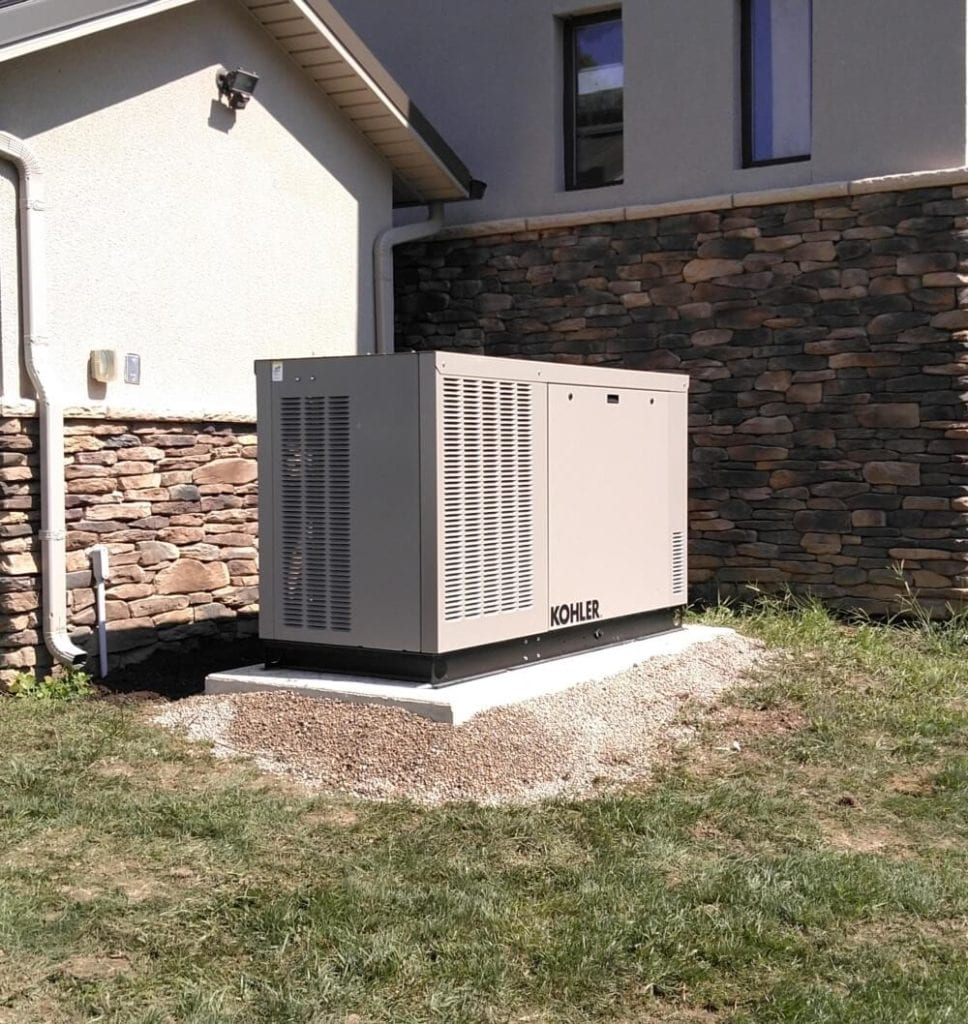How to make sure that you pick the perfect whole house backup generator for your residential property in Central Ohio

We all know how there are limitless ways that your home’s power can go out, and that your residential electricity is now more of a necessity than a luxury. Many inconveniences and financial losses can be incurred during an extended outage, but when you have a high-quality whole house backup generator you don’t have to worry about all of these stressful scenarios.
Below we’ll be providing a comprehensive guide oriented around buying a whole house backup generator, so here’s everything you need to know!
Difference Between Whole House Generators And Regular Standby Home Generators
A lot of our clients ask us about the differences between a whole house generator and the rest of its industry counterparts, which is why it’s important to keep the following whole house generator benefits in mind:
- Higher quality engine
- Liquid-cooled
- Reduced noise
- More durability
- Load management
- It can back up an entire property
- It’s very fuel-efficient
Although standard home generators can power smaller homes, once you add in some powerful appliances like your refrigerator and air conditioning they can no longer keep the ball rolling for extended outages. The kilowatt (kW) range for standard generators is 9-20kW.
Whole house generators have a kilowatt range from 22-48kW, which provides an exponentially improved peace of mind feeling knowing that your property will be able to go through extended power outages without any loss of functionality. The above benefits of whole house generators really only brush the surface when it comes to just how much more effective they are as compared to the rest of the generator industry, so it only makes sense to invest in this technology today that will undoubtedly control the generator industry well into the future!
3 Important Steps When Buying A Whole House Backup Generator
The following are three important steps to keep in mind as you’re deciding which type of whole house generator is best for you and your property:
Step #1: Deciding On A Fuel Source
Having an abundant fuel source for your whole house generator can sometimes be a lot easier said than done, and this factor may be determined upon your unique property and personal preferences.
You’ll have the options between natural gas, liquid propane and diesel fuel for your whole house generator. Liquid propane and diesel will require rather large tanks, and natural gas can many times be connected to gas lines. Our team will help you better determine which fuel option will work best for you and your property prior to installation.
Step #2: Picking The Correct Generator Size
Understanding the proper sizing of a standby generator is a major part of the installation process, so it’s a good thing that you’ll be working with seasoned electrical specialists through the Garber Team. Our experts will go through a whole series of factors that directly apply to the unique parameters of your property, including your electrical appliance load requirements.
You’re always going to need a standby generator that can handle your property’s unique electrical load requirements, but this type of calculation can be rather difficult to correctly determine. We’ll help you better understand the kilowatts per appliance, and then help you choose the generator that provides the correct amount of output to allow you and your household full functionality during outages.
There are many different size options for whole house backup generators, and we understand how hard it can be for homeowners to know which size is best for them. This is exactly why you should always put your trust in experienced industry professionals like the generator specialists at Garber Electric to support you in deciphering your best generator size option!
Step #3: Picking A Transfer Switch
Your generator is ultimately going to need a switch to turn on, which is where an automatic transfer switch (ATS) comes in to automatically come into action when it notices a failure with your property’s power output. Your automatic transfer switch will be consistently sensing your property’s utility power, so it will start its engine once it detects an electrical drop caused by a municipal outage.
A lot of homeowners don’t realize this, but having the right transfer switch is just as important as having the right type of generator because they work together to restore lost power to your property. The best way to understand what type of transfer switch will work best for you and your property is to understand the amperage associated with your electrical service panel.
Many homes will have a 200-amp main breaker, which subsequently means that your home can consume a maximum electrical output amount of 200 amps. So if you have a 200-amp main breaker, you’ll require a 200-amp transfer switch.
Reach Out To The Generator Experts At Garber Electric To Learn More About Getting A Whole House Backup Generator At Your Property!
Garber Electric has supported countless households throughout Central Ohio with whole house backup generator installations, and we’ll be more than happy to answer your questions and let you know which type of generator will work best for you and your property.
Contact us online or call us at 937-771-5202 or 614-212-7900 to get in touch with our team and let us know how we can support you with a brand new whole house backup generator!




